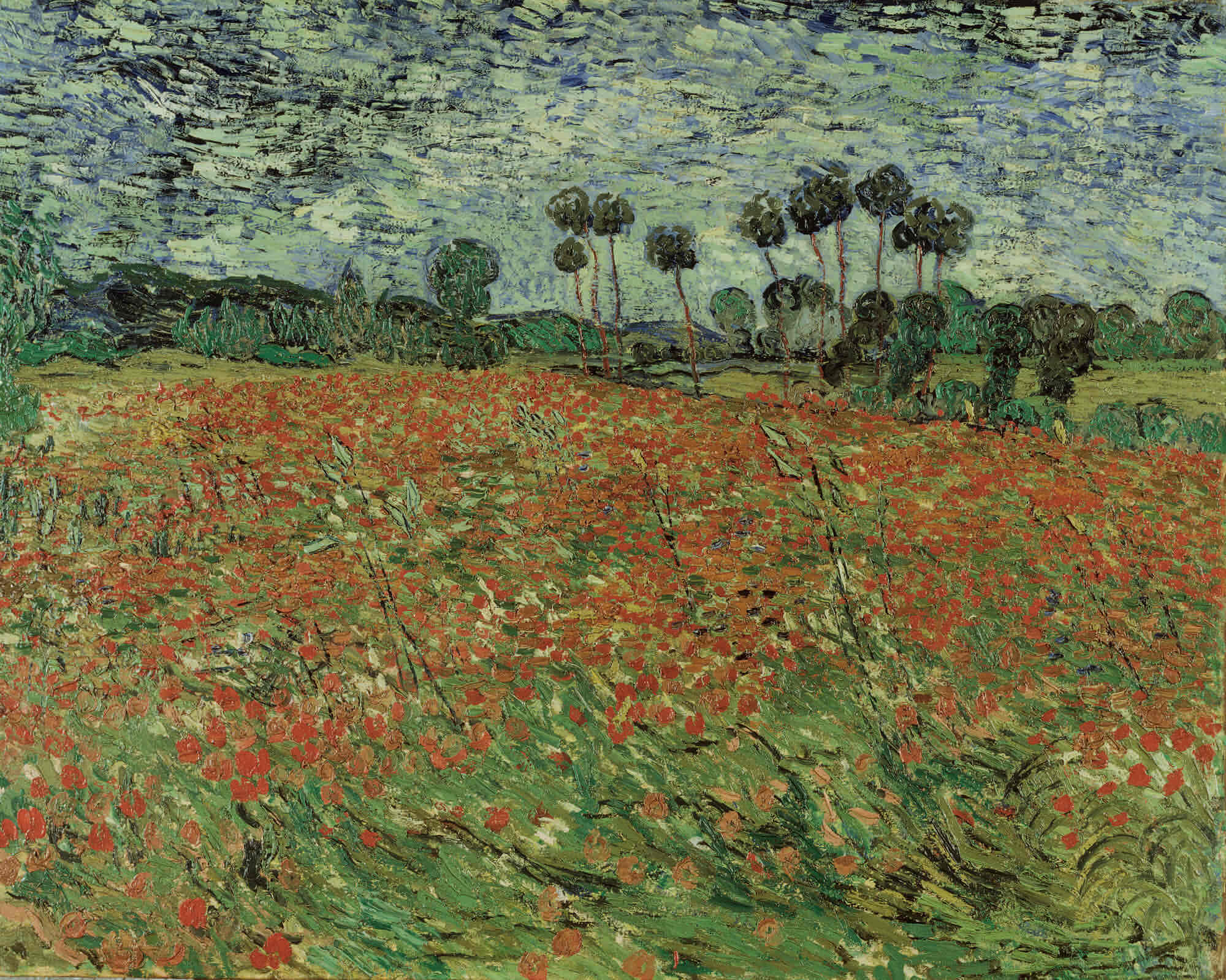Van Gogh is largely known for still life paintings such as Sunflowers or small landscape paintings created from the view from his window such as Starry Night; however, Van Gogh felt most at peace when he was in nature, and many of his paintings depict rural landscapes. After living with his brother in Paris for about two years (1886-1888), Van Gogh escaped to the more rural town of Arles, positioned in the south of France. This is where he painted many of his most acclaimed paintings. He was more inspired by the landscape and environment of southern France than he was by metropolitan Paris. As he told another artist, Bernard, in a letter in 1888: as he painted, he was ‘surrendering myself to nature’.
Theo and Vincent often discussed their favourite artists in their numerous letters. Millet, one of the forefathers of Modern Art and Realism, was always on the tip of Vincent’s tongue, but Daubigny, famous for his landscape paintings, was also a favourite of Van Gogh’s through the years. Van Gogh saw Daubigny’s paintings in 1875 both at Goupil and Cie—the art dealership where he had once worked and where Theo continued to work for the majority of his adult life—and the Musée du Luxembourg in Paris. Van Gogh even mentioned Daubigny’s name, among the names of several other artists, justifying his goal to become an artist in many of his 1880 letters. From Van Gogh’s perspective, Daubigny injected feelings and emotions into his landscapes, which Van Gogh found much more relatable than the realistic, photographic depictions of landscapes of some of his peers.
Daubigny’s interest in light and reflection, as well as his loose brushwork, formed a connection between him and the Impressionists, who were about a generation younger. He was both acclaimed and criticised among established artists and critics, but his work was often shown at the Academy, which was the authority on art at the time. His position as an artist whose work was shown at the Academy’s highly acclaimed annual exhibition gave Impressionists hope. His realistic depictions and looser brushwork opened the door for other Impressionists, especially when he was on the board of the Academy and permitted some Impressionists to display their work there. This would give a lot more recognition and legitimacy to the Impressionist movement; thus, he truly served as the link between the Academy and the Impressionists.
Although Daubigny’s work began with more somber tones and colours — as can be seen in Moonrise at Auvers (1877), he began to take note of the Impressionists’ use of colour when working with reflections, light and landscapes. The Impressionists had been inspired by his loose brushwork, but they in turn influenced him as well, in much the same way that Van Gogh was inspired by the brighter colours of the Impressionists’ work after his brief period in Paris.
Van Gogh’s pleasure in painting outdoor scenes continued when he moved to Auvers-Sur-Oise near the end of his life. Daubigny had spent much of his life and career painting here, especially focusing on the Oise river that flowed through the town. He even constructed a studio boat—a project that Monet would copy in 1873, allowing him to paint the river and its surrounding landscape from a more immersed perspective, rather than from solid ground.
In 1890, Van Gogh painted two images of Daubigny’s house and garden in Auvers-Sur-Oise, even giving one, which can be seen in the exhibition, to Daubigny’s widow. The comparisons drawn among these three artists in this exhibition largely focus on the work from the last year of Van Gogh’s life, during which he worked and lived in Auvers-Sur-Oise. In some cases, Daubigny, Monet and Van Gogh painted nearly the exact same subjects. The poppy fields in Auvers-Sur-Oise, for example, or the farms bordering town.
By focusing on the works of Daubigny, Monet, and Van Gogh, this exhibition details the evolution of the work of an artist, Daubigny, who had a great impact on the Impressionists—both politically and artistically, as well as on Vincent himself.
The exhibition Daubigny, Monet, and Van Gogh: Impressions of Landscape is on view at the Van Gogh Museum through to 29 January 2017 and is included in the museum ticket price.
